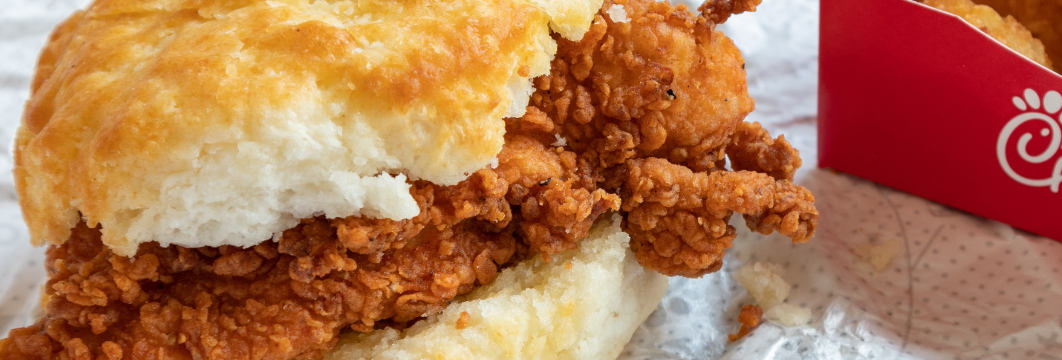New Betr members are usually shocked when told that they don’t need to count calories for success. It’s understandable; the concept of calorie counting as essential to weight loss is practically gospel.
Counting calories, or the Energy Balance Hypothesis (EBH) of weight change and fat storage, has been considered the gold standard of weight control strategies for almost a hundred years.
But does it tell the whole story?
Look at your own experience. If you’ve tried to lose fat by counting calories, you know it’s ALOT harder to take those pounds off than put them on. Why?
In this article, we’ll discuss:
- The limitations of calorie counting and the energy balance hypothesis
- How some calories affect fat storage more than others
- The role of the microbiome in weight loss and nutrition
- Where Betr stands on Energy Balance
Energy Balance: Not the entire answer
Calorie counting sounds great, but there are some limitations to the science.
Think of your body as a car.
Actually, don’t. A car burns fuel at a relatively consistent rate, depending on its speed. Your body doesn’t work this way.
Countless variables can impact how your body stores or burns calories: your age, genetics, health, gender, and activity level are just a few.
For energy balance to be the perfect answer, your body would have to burn calories at an entirely consistent rate.
Other issues with the energy balance hypothesis are how it’s been put into practice over the decades and its questionable effectiveness in addressing unhealthy weight gain and chronic disease.
If you can’t successfully lose weight by counting calories, society writes them off as lacking “willpower” or “self-control.” This attitude is convenient for diet and fitness professionals because they don’t have to put in further effort.
After all, how can a doctor, trainer, or nutritionist help someone who won’t help themselves?
But, the thing is, if the energy balance hypothesis was the perfect answer, shouldn’t it be easy and painless to reduce calorie intake? After all, that energy is available as stored fat, right?
But again, the body doesn’t work that way.
The body sets off alarm bells when your energy intake drops below a certain threshold. It focuses effort on saving the energy it already has.
That’s why, when you try to lose weight through pure calorie counting, you’re battling cravings, low mood, and low energy.
Your body is trying to use less energy, keep that stored fat until it’s desperate, and encourage you to eat more by causing cravings!
Finally, the energy balance metabolism hypothesis leans heavily on the need to increase calorie burn through exercise- as much as you can handle.
But, exercise can contribute to all of the issues discussed above, like cravings and sluggish weight loss.
In addition, too much intense exercise can contribute to another issue that interferes with fat burn and weight loss – inflammation.
An essential part of the exercise is recovering and rebuilding muscle tissue. If you don’t have enough energy reserves and are already experiencing chronic inflammation, your body won’t properly repair itself.
Your body can experience more stress and inflammation, which further interferes with fat loss.
Takeaway
Flaws of the energy balance hypothesis include: an emphasis on willpower and self-control, ignoring differences in individual metabolism, and dismissing changes in energy metabolism during calorie counting.
All Calories aren’t created equal.
The scientific definition of a calorie is “the energy required to raise the temperature of 1 gram of water by 1 degree centigrade.”
What does that definition have to do with the calories we eat? In the real world, not much.
While a calorie is a specific measurement of energy, the calories we get from our food are wrapped up in an endless variety of nutrients and macronutrients. Proteins, fats, and carbohydrates are all sources of calories our body responds to differently.
Specifically, our body reacts very differently to different types of carbohydrates, the scientific term for “sugar.”
Let’s look at two foods with a comparable amount of sugar and calories: one regular-sized apple and 8 ounces of soda (not even a whole can). Both contain around 25 grams of carbohydrates and 90 or so calories.
We don’t need to make this super scientific. Just think of your personal experience. Will your body react to those two foods in the same way?
If the energy balance hypothesis was the perfect solution, shouldn’t you feel just as fueled and energized by both?
But, of course, you don’t. If you’re hungry and you eat an apple, it usually at least takes the edge off, whereas a mini-can of soda does pretty much nothing for you.
One explanation for this is the Glycemic Index (GI). The GI measures how different foods affect your blood sugar. High GI foods cause a quick high blood sugar spike, and low GI foods cause a gradual, less dramatic one.
In our example above, soda is the higher-GI food. The sugar from the soda essentially goes straight into your bloodstream.
How does your body respond to a rise in blood sugar? It releases insulin.
The problem with high GI foods is that the blood sugar spike often causes an equally significant insulin release. But then, the sugar is processed so quickly and easily that our body usually has extra circulating insulin.
This extra insulin affects fat metabolism in two ways.
First, insulin encourages unused blood sugar to be stored as fat. Secondly, because remaining insulin is present without glucose to process, your body “panics.”
The leftover insulin conveys that your gas tank is empty and your body shifts into “starvation mode.” It holds on tight to its energy sources, thinking it won’t get enough energy from the diet.
What’s a significant source of stored energy in our body? Fat.
So when your body gets too many calories from high-glycemic foods, not only does it cause insulin to store fat, it makes that fat harder to lose.
Does that sound like a recipe for weight loss?
Takeaway
Calories are packaged in different nutrients we get from our diet. These nutrients affect our blood sugar and the hormones responsible for our metabolism in different ways. This means the same amount of calories can have very different effects on how our body stores or burns fat.
The Metabolic Microbiome
Another issue with counting calories and energy balance is that you’re not the only one with a say in how your body stores and burns fat and carbohydrates. About 300 trillion other creatures in your gut also contribute to the process!
We’re talking about the beneficial bacteria that live in your digestive system. Collectively, they’re called your gut microbiome. They impact everything we’ve discussed, including hormone response, blood sugar control, fat metabolism, and inflammation.
Let’s return to the glycemic index and our apples and soda snack. We’ve already said they have similar carbohydrate and calorie content, so why do our bodies respond to them differently?
Fiber! The sugar in the apple is locked up inside more complex carbohydrate molecules that need to be broken down.
And what breaks them down? Our microbiome! The beneficial bacteria in our gut feed on this fiber through fermentation. The byproducts of this fermentation have a super helpful effect on our metabolism.
First, healthy gut bacteria directly stimulate the release of hormones in the digestive tract that positively affect appetite, blood sugar processing, and insulin response. A more effective insulin response leads to less fat storage and more efficient use of blood glucose.
A more effective insulin response combined with lower blood sugar levels from lower GI foods provides a more consistent energy level. Constant blood sugar levels keep your body from entering into “starvation mode” and holding tight to stored fat.
Secondly, in breaking down fiber, our microbiome produces short-chain fatty acids (SCFAs). SCFA’s are a fantastic gift from our gut bacteria with several health benefits. They make many hormones that regulate blood sugar, appetite, and fat storage.
Short-chain fatty acids are also potent anti-inflammatory substances, leading to the microbiome’s last role that we’ll discuss…
In the real world, excess fat storage usually comes from a diet of extra calories from foods packed with added sugar, fat, and other chemicals for taste and appearance. The type of stored fat that results from this diet can cause low-grade inflammation. This inflammation interferes with many bodily functions, including blood sugar control.
In addition to the inflammation from unhealthy stored fat tissue, a poor diet interferes with the function of your gut microbiome.
Instead of healthy bacterial species producing helpful substances, the species in your microbiome shift to ones that make inflammatory substances.
On top of THAT, ongoing inflammation causes the release of stress hormones, insulin resistance, fat storage, and heart disease.
The worst thing about inflammation is that it’s a cycle that builds on itself. Inflammation causes more inflammation and dysfunction in the body.
Takeaway
The gut microbiome contributes to healthy blood sugar metabolism, battling inflammation, producing essential hormones, and mobilizing stored fat for energy. The energy balance hypothesis doesn’t directly account for the role of the microbiome in energy metabolism.
Calorie counting, Gut Health, and the Betr Method
Betr founder Dr. William Ferro developed this method after years of watching clients struggle and fail to find health. People tried using the traditional approach of counting calories, weighing foods, and watching macronutrients, usually without success.
That’s because counting calories isn’t the whole story. On an individual level, many people find that depriving themselves of calories increases stress, starves their body, and leads to inevitable cravings and fluctuations in weight gain and loss.
In practice, the energy balance hypothesis has proven to be an unsustainable and ineffective way to lose weight. It isn’t working for millions of people, as obesity, type 2 diabetes, and heart disease epidemic rates continue to climb.
Betr recognizes that the factors we’ve discussed, hormone cycles, glycemic index, inflammation, and gut health, are essential to sustainable, healthy weight loss.
As a Betr member, you won’t count calories, weigh your foods, or measure macros- because your body knows what to do with good food!
Combining the science of gut health to use food as energy for healing inflammation, our members are reaching health and fitness goals that have alluded them for years.
They’ve lost weight, reduced chronic stress and anxiety, and reversed severe disease- WITHOUT COUNTING CALORIES!
Your body is a miracle of nature. It can recognize its wants and needs without starving or working itself into exhaustion.
So why keep trying what has failed so many times in the past? If you want to lose weight without weighing your food, measuring macros, and counting every calorie- we have a Betr Way!
If you want to learn more about gut health and its impact on blood sugar, hormone function, and weight loss, we have more articles like The Skinny on Gut Health and The Sweet Story of How Gut Health Can Prevent Diabetes.
To learn more about the Betr Method for healing your gut and reducing inflammation using food as medicine, read our Ultimate Guide. You can also join our Private Online Community to join the thousands of members sharing inspiration and information on their journey to Betr Health!
If you’re ready for a happier, healthier life, try our risk-free trial today! Give us three good days, and we know you’ll experience better sleep, lower stress, and more energy! Don’t wait any longer- because you deserve Betr!
After reading this article, you may be asking yourself if your own health hurdles could be related to an unhealthy gut.
Explore Betr's risk-free trial to see if you could benefit from using food as medicine to rebuild your microbiome and realize the healthy potential you never knew you were missing!











